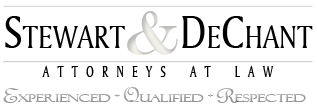There are no secrets as it relates to evidence. Every piece of evidence comes in after a proper foundation is laid. You need to know the law and you need to have the witness support to bring in any piece of evidence.
You have to be a pro. The evidence has to come in seamlessly.
Your documents and your evidence should be pre-marked. Adequate copies for all opponents and the court and the court reporter and the witness.
If you think you’re going to have a problem with a piece of evidence, have a motion in support of that evidence in front of the court prior to the trial so that you’re not surprised and the court is not surprised, and your best foot is placed forward for the Judge to have the time to reflect and make a thoughtful considered opinion.
It helps you teach, whatever it may be.
Direct Examination of the Expert
Expert on Direct
1. Identify
2. Qualify → Credentials; entitled to get opinion
→ Go beyond to increase probative value of his/her testimony
a) Formal education, school and residency, internship (fast)
b) Certification to be board certified
c) Writings for magazines
d) Teaching posts
e) Hospital staffs, department head (take turns)
3. History
a) Law gives hearsay okay relevant it is approved
b) Assumed all truth to be cleared of ills
c) Can include details of accident if doctor relied
4. Exam – disclose and insist of
5. Diagnostic procedures
a) X-rays; have explained
b) Can possibly rely on opinion of reader of x-ray
6. Diagnosis
a) Do you or have you an opinion with a reasonable degree of medical certainty with documentation of a condition of ill being
7. Treatment
a) Find responses to treatment
b) Dates
8. Prognosis
a) Do you have an opinion with a reasonable degree of medical certainty with documentation as to whether the condition is temporary or permanent?
9. Causal relationship
a)Do you have an opinion with a reasonable degree of medical certainty whether or not the condition o fill being is related to the accident?
10. Bill
a) Must be a reasonable and customary charge
b) Say do you have an opinion what a reasonable and customary bill or charge is?
c) What is your charge?
11. Future medical treatment
a)Do you have an opinion with reasonable medical certainty as to whether or not future medical treatment?
b)What?
12. Future medical bill
a)Do you have an opinion with a reasonable degree of medical certainty as to what future medical bill will be reasonable and customary bill will be?
Direct in General
The witness is the star.
The witness cannot be the star if he’s not prepared. If he’s not prepared, you need to be shot.
“Is there an exhibit that would help you explain that to the jury?”
“Does that exhibit fairly and accurately depict….”
What is…
Use the direct examination to have the witness explain all of the terminology and demystify the voodoo.
Make each witness supportive for every other witness so that you get the accumulative effect.
Have your witnesses support all of your other witnesses. As an example, if it is factual, have each witness place your other witnesses at the scene and location or whatever is necessary to enhance all your other witnesses’ credibility on whatever subject you need to succeed in.
Use each one of your witnesses to allow the jury to find less credibility with any one or more of the defense witnesses. Example, not having an ability to see or testify on a matter that is critical.
Ability to perceive the evidence.
Bias.
Any issue that would decrease that witness’ credibility.
Make sure your witnesses read and understand their deposition transcripts and know that with almost no exception they cannot testify any differently than they previously testified.
I like to use summary exhibits.
Handing you Exhibits 2 through 36, are those a fair and accurate copy of each of your bills?
Look at Exhibit 1; does that accurately summarize each of the charges depicted in Exhibits 2 through 36?
Is all the medical care itemized in Plaintiff’s Exhibit 2 (the summary exhibit) medical care which was required as a result of the injuries and damages that the plaintiff sustained on the date of the collision.
Did you refer the plaintiff for any of that care? (Explain what care.)
Is that care fair, reasonable and customary?
Are the charges for all the care set forth in Exhibit 2 fair, reasonable and customary?
Experts are expensive. You don’t want to use a different expert to get every bill in so prepare your expert to be able to testify with regard to care and treatment, others that were before him and/or provided.
Have your plaintiff identify each of the charges being care that he incurred.
Eliminate from your client’s expectation and/or from any testimony any evidence on damages that has any potential to be overreaching.
The plaintiff does not complain, somebody else does.
A plaintiff should never say the word “pain.”
No day in the plaintiff’s life is the same.
Have the plaintiff describe all the effort the plaintiff does to continue to do the activities the plaintiff used to do.
Minimize the things that the plaintiff cannot do, maximize the things the plaintiff attempts to do.






